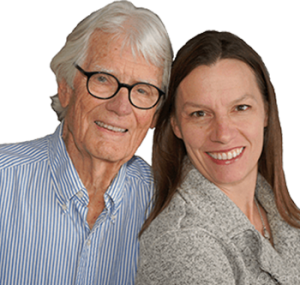There’s a Gifford-Jones Law that says, “Never accept radiation you don’t need.” But a dangerous new medical trend is breaking this law. What’s the worry? Across North America, some private clinics are now promoting the promise of early detection of disease to healthy people. In return for a fee, buyers get whole-body screening using a variety of diagnostic imaging equipment.
These promoters don’t have to be marketing stars. People naturally fret about their mortality and become receptive listeners. It’s wrong to profit on those fears.
But the trend is catching hold. The sell is easy when the hope is early detection of a small cancer. “You may not have any symptoms as yet,” they’ll pitch, “and an early catch means high likelihood of a cure.”
Or another pitch might be the benefit of detecting a life-threatening aneurism. “The largest artery in your body could be bulging and about to rupture causing massive bleeding and death,” they might suggest. “A preventive scan will save your life!”
Full body scans are good at discovering what are called “incidentalomas”, the medical term for incidentally found asymptomatic tumors. Sometimes they find stones in the gallbladder that are best treated by the crematorium at 90 years of age. Or they can find a small asymptomatic hernia that does not warrant surgery and would otherwise have gone unnoticed for life.
Some people get lucky with these scans. For instance, a brain tumour may be discovered early, enabling surgical treatment. But radiologist in The Netherlands who conducted a study of full body scans concluded that there were false positives 16 percent of the time.
Experts in various countries have given thumbs down on these procedures. Dr. Mirza Rahman, a physician and president of the American College of Preventive Medicine, says these scans are a bad idea. “Follow-ups mean everything from more costs to more procedures that may lead to more complications.”
The American College of Radiology also released a statement, “There is no documented evidence that total body screening is cost effective or evidence it prolongs life.”
All the different types of scans come with major risks. With CT scans, it’s the radiation exposure. Health Canada warns “Whole body CT screening exposes you to radiation levels that are 500 to 1000 times as high as those of a routine chest X-ray and increases your risk of developing radiation-induced cancer.”
Magnetic resonance uses no radiation but has other concerns. According to Health Canada, “The strength of the magnetic field used in MRIs can make metallic implants, such as pacemakers, metal pins or clips, move and tear soft tissue. MRIs may also cause biological effects, including the electrical stimulation of nerves, and the heating of implanted metallic leads, which may cause serious burns. Also, the magnetic field in an MRI scanner can magnetize nearby objects, which can become dangerous projectiles in an examination room.”
Is there a time for full-body scans? People having a genetic predisposition to forming multiple tumors may benefit, says Dr Resten Imaoka, a radiologist at Washington University School of Medicine in St. Louis. But this is the point: unless your doctor has a good reason for ordering a full-body scan, it’s best to stick to recommended and proven screening tests, such as for colorectal cancer.
A wise sage was asked, “How would you describe a healthy patient?” He replied, “A patient not been seen by many doctors.”
Remember, the best way to fight illness is not with endless tests. It’s by avoiding illness in the first place. And that’s the original Gifford-Jones law. Adopt a healthy lifestyle early in life and stick with it.
Sign-up at www.docgiff.com to receive our weekly e-newsletter. For comments, contact-us@docgiff.com. Follow us on Instagram @docgiff and @diana_gifford_jones

